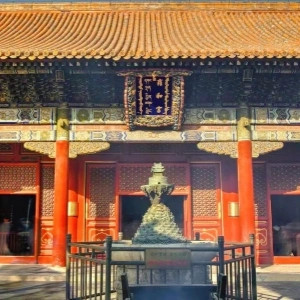The Rich Tapestry of Chinese Opera: An Exploration of Its Depths and Vibrancy
Chinese theatre, a testament to the nation's profound cultural heritage and artistic ingenuity, weaves together a myriad of elements to create a vibrant and captivating art form. Encompassing a diverse range of styles, from the ancient ritualistic dances of Shang Dynasty to the vibrant and modern productions of contemporary times, Chinese theatre has evolved over millennia, reflecting societal changes, philosophical thoughts, and aesthetic preferences.
Historical Roots
The roots of Chinese theatre can be traced back to ancient rituals and ceremonies, particularly those associated with religious worship and ancestor veneration. Early forms, such as "baijiu" (hundred plays) and "youxi" (entertainment games), combined music, dance, poetry, and drama to tell stories, often with a moral or didactic purpose. As time progressed, these primitive forms evolved into more sophisticated theatrical traditions, each with its unique characteristics and regional flavors.
Major Theatre Forms
Peking Opera (Jingju)
Peking Opera, considered the pinnacle of Chinese theatre, combines singing, acting, martial arts, acrobatics, and intricate costuming into a visually stunning performance. With its roots in the late 18th century, it showcases a rich repertoire of historical tales, often with themes of loyalty, filial piety, and justice. The use of facial makeup (lianhua) and elaborate costumes adds depth and complexity to the characters, while the musical accompaniment, featuring traditional instruments like the erhu and suona, creates a haunting atmosphere.
Kunqu Opera
Known as the "mother of Chinese operas," Kunqu Opera originated in Kunshan, Jiangsu province, during the Ming Dynasty. It emphasizes poetic language, intricate melodies, and refined gestures, setting a high standard for literary drama. Its music and librettos have influenced numerous other theatrical forms, demonstrating its enduring legacy.
Cantonese Opera
Cantonese Opera, popular in southern China and among overseas Chinese communities, features a vibrant mix of martial arts, acrobatics, and elaborate costumes. Its music is marked by the use of Cantonese dialect and traditional instruments like the erhu and gongs, creating a lively and energetic atmosphere. The genre is renowned for its vivid portrayals of historical heroes and mythical creatures.
Sichuan Opera
Characterized by its distinctive facial makeup techniques, known as "bianlian," Sichuan Opera showcases a wide range of emotional expressions on a single actor's face. Its performances often incorporate humor and satire, reflecting the wit and ingenuity of the Sichuan people. The use of fire-spitting and other stunts adds an extra layer of excitement to the performances.
If you want to know more about Chinese Opera and itineraries, please contact us. Popular Tour Packages:
Contemporary Developments
In recent decades, Chinese theatre has undergone significant modernization and diversification. While traditional forms continue to thrive, contemporary theatre productions have emerged, blending elements of Western theatre techniques with Chinese aesthetics. Playwrights and directors experiment with new storytelling methods, themes, and multimedia elements, pushing the boundaries of theatrical expression.
Moreover, the rise of international exchanges has brought Chinese theatre to global audiences, fostering cross-cultural dialogue and understanding. Festivals and workshops around the world celebrate the diversity and richness of Chinese theatrical traditions, while Chinese artists and companies gain exposure to international audiences and creative practices.
Conclusion
Chinese theatre, with its deep historical roots and ever-evolving nature, represents a vibrant and multifaceted art form. It is not merely entertainment but a window into the Chinese soul, reflecting the nation's values, beliefs, and aspirations. As it continues to adapt and innovate, Chinese theatre promises to captivate and inspire audiences for generations to come.
Related Posts
Create Your Customized Trip
Take about 2 minutes to fill the form to tell us how you like to travel, and get a reply within 1 working day.









